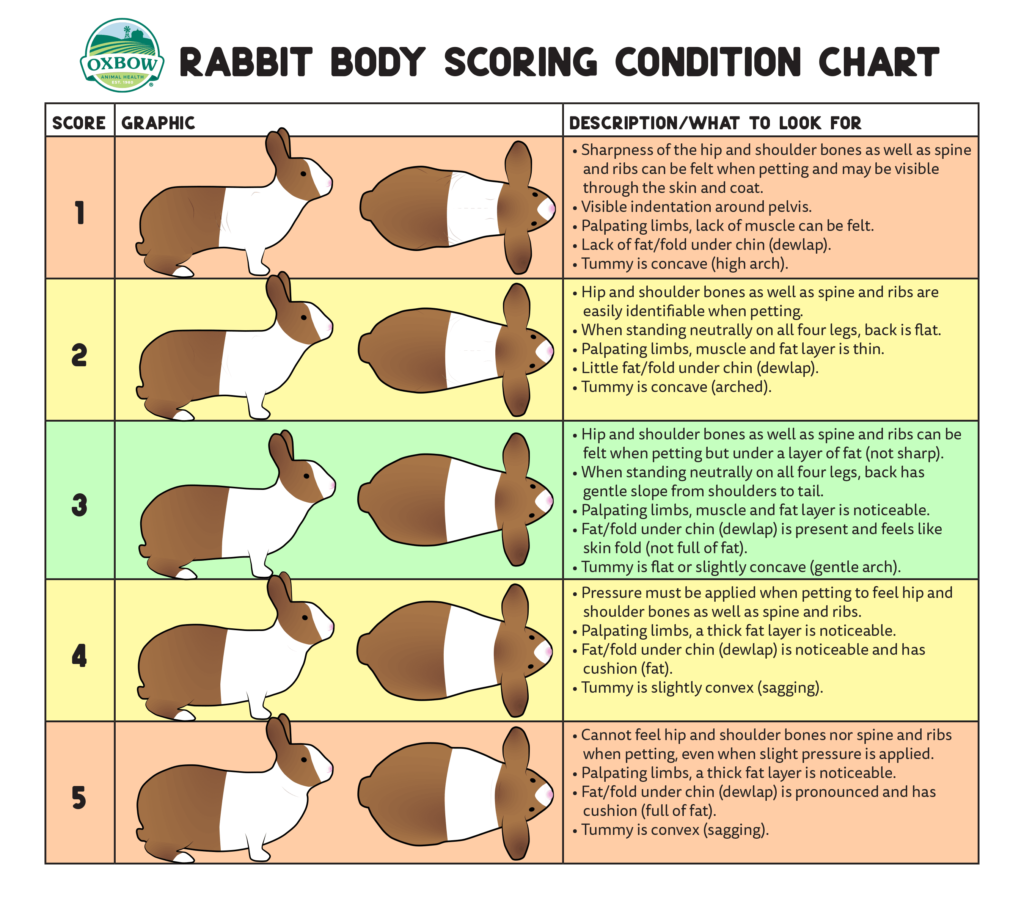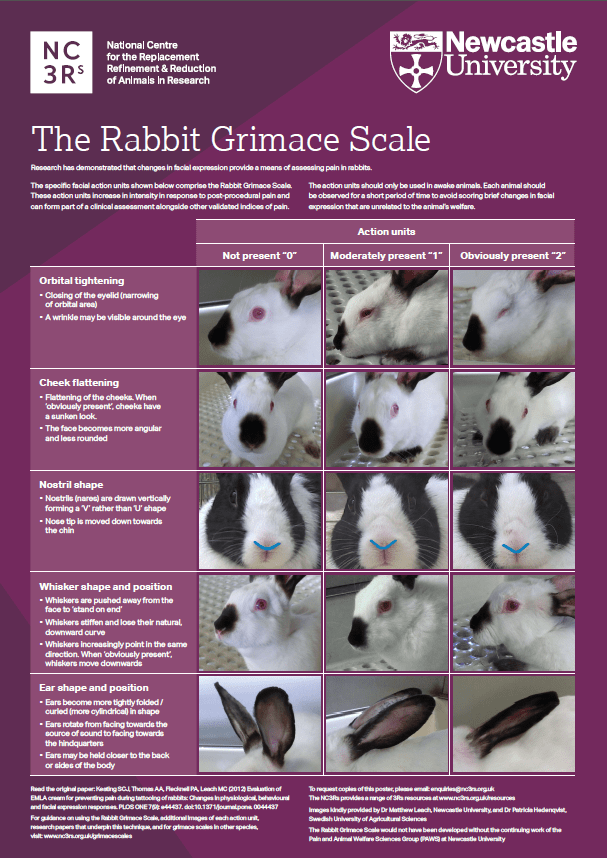Is my rabbit sick?
Rabbits are prey animals in the wild. This has made them develop a tendency to hide symptoms of disease until they are too weak to continue hiding it, in that way they would not drag attention from predators. And yet, there are signs that we can look for and try to spot an incipient illness and bring them earlier to the vet. If the rabbit lives indoors it will be easier to be aware of these signs but a rabbit living outdoors should always be monitored closely as well.
Checking the weight and body condition is always an easy way to spot any underlying, more chronic problem that could affect our rabbit.
Weight:
The weight of an adult rabbit should be fairly constant if there are no changes in its lifestyle. Female rabbits that are not spayed can have weight changes during season but not really important. Sometimes we can see an increase in weight during winter if we keep the rabbit indoor and in the summer it is outdoor. Outdoor rabbits could lose some weight in winter due to energy use to maintain temperature but should not be a significant loss. Apart from this, a rabbit that is losing weight constantly, despite eating, or apparently eating, is always a red flag. A rabbit that is constantly gaining weight should be monitored as well and maybe bring it to the vet as well as a series of problems could be going on. However, a rabbit gaining weight is usually due to lack of exercise and poor diet.
You can use a human scale or a smaller scale, like a baby scale that measures in grams, depending on the size of your rabbit. I recommend checking the weight every week or every other week, depending on the age and any possible concurrent disease.
Body condition:

Body condition is another aspect that will give us a good assessment of the general health of the rabbit, together with the weight. A rabbit that is losing body condition but weighs the same should be seen by a vet as soon as possible, as this could indicate a mass growing somewhere inside. Otherwise, normally when a rabbit loose body condition will reduce weight as well but sometimes they lose weight and not body condition. This could be due to the fact that rabbits accumulate a lot of fat inside the abdomen, so an animal could be actually overweight but looking fairly normal on body condition. To assess the body condition score of a rabbit we should palpate the ribs, spine and hip bones, as well as the abdomen. On the table here you can see the different scores for your rabbit.
Other signs:
In addition to the weight and body condition, we can look for a series of behaviour changes and physical signs that could indicate that our rabbit is not feeling well.
- Behaviour changes:
- Not active as usual
- No jumping
- Aggression (to the owner or other pets)
- Unsettle, walking around all the time, laying, standing up constantly
- Eyes close and ears back (check Grimace pain scale), sign of pain
- No grooming, dirty bottom
- Wetting itself when urinates
- Selective eating (only eating certain foods)
- Not eating
- Drinking more than normal
- Grooming too much, causing skin damage
- Shaking head very often
- Other physical and more advanced signs of disease:
- Urinating more than normal.
- Urine with blood. Be aware that orange or reddish colour can be normal on rabbit urine.
- Head tilted to one side
- Constant drooling
- Teeth grinding when not eating
- Not moving
- Abnormal posture
- Limping
- Distended abdomen
- Bald patches
- Liquid faeces or blood on faeces
- Seizures
- Circling (walking constantly in circles, usually to the same side)
- No defecating

Conclusion:
If you see any of these signs, or you think your rabbit is not well, you should look for veterinary attention as soon as possible as rabbits can get worse rapidly. One special consideration goes for a rabbit that is not defecating. When a rabbit is not passing faeces, it should be seen by a veterinarian as soon as possible, even if it is still eating. Ideally in the first 12 hours.
References:
- Meredith, A. and Johnson-Delaney, C., 2010. BSAVA manual of exotic pets. 5th ed.
- Quesenberry, K., Orcutt, C., Mans, C. and Carpenter, J., 2021. Ferrets, rabbits, and rodents: clinical medicine and surgery. 4th ed.
- nc3rs.org.uk/rabbit-grimace-scale
- www.oxbowanimalhealth.com